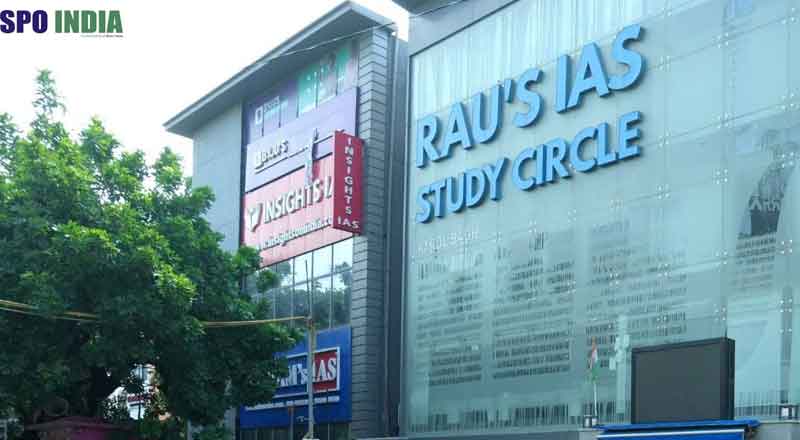- 3 IAS aspirants died after flooding at coaching institute’s basement
- Widespread student protests over negligence
- Only 67 of 583 Delhi coaching centres have fire safety certificates
On Saturday evening, three students—Shreya Yadav from Uttar Pradesh, Tanya Soni from Telangana, and Navin Dalwin from Kerala—tragically lost their lives due to flooding in the basement of Rau’s IAS Study Circle in Rajinder Nagar, Delhi. Heavy rains inundated the basement, trapping the students and highlighting severe safety violations at the coaching center. This incident has sparked widespread protests from students and criticism of local authorities for failing to ensure the safety of educational institutions.
Background of Rau’s IAS Study Circle
Rau’s IAS Study Circle, a prominent coaching center in Delhi, has come under scrutiny for not adhering to safety regulations. Despite its reputation, the center’s use of its basement as a library instead of a storage area violated civic authorities’ directives. This misuse of the basement space was a significant factor in the students’ deaths.
Key Violations
- Improper Use of Basement: The basement was used as a library instead of a storage area.
- Lack of Drainage Facilities: The basement lacked proper drainage, leading to flooding during heavy rains.
- Single Entry and Exit Point: There was only one entry and exit point, which is inadequate for emergency situations.
Regulatory Framework for Basements
The use of basements in educational buildings is strictly regulated by the Unified Building Bye-Laws 2016 and the Master Plan of Delhi (MPD) 2021. Key requirements include:
- Height and Width: Every basement must be at least 2.4 meters in height and width.
- Ventilation: Adequate ventilation must be provided.
- Drainage: Surface drainage must not enter the basement.
- Watertight Construction: Basements must be designed to be watertight with appropriate damp-proofing.
- Access: Access to basements must be via main or alternate staircases.
- Fire Safety: Basements used for educational purposes must meet fire safety requirements and obtain fire clearance for buildings with more than one basement.
Compliance Issues in Delhi Coaching Centers
A status report submitted by the Delhi Police in response to the Delhi High Court’s inquiry into the Mukherjee Nagar fire incident revealed alarming statistics about coaching centers in the city:
Total Coaching Institutes: 583
Fire Safety Certificates: Only 67 institutes have them, while 516 do not.
Market Size of Coaching Institutes
The coaching industry in India is significant, valued at ₹58,088 crore. Civil services coaching alone contributes ₹3,000 crore. Delhi, particularly Rajinder Nagar and Mukherjee Nagar, is a major hub for UPSC-CSE coaching, attracting lakhs of students from across the country.
Financial Insights
Government data shared with the Rajya Sabha indicated a substantial increase in GST collected from coaching centers, from ₹2,240.73 crore in 2019-20 to ₹5,517.45 crore in 2023-24. This growth reflects the expanding scale and economic impact of the coaching industry.
Responses to the Tragedy
The tragic deaths of Shreya, Tanya, and Navin have ignited a wave of protests and demands for accountability. Students and activists are calling for stricter enforcement of safety regulations and greater oversight of coaching centers. They argue that the rapid growth of the coaching industry should not come at the expense of student safety.
Safety and Regulatory Oversight
The incident at Rau’s IAS Study Circle underscores the urgent need for rigorous safety and regulatory oversight in the education sector. While the economic contributions of coaching centers are significant, ensuring a safe learning environment is paramount. Authorities must prioritize the enforcement of existing regulations and consider new measures to prevent such tragedies in the future.
Government Action
In response to the incident, local authorities have promised stricter enforcement of safety standards and increased inspections of educational institutions. The Delhi government has announced plans to review the safety compliance of all coaching centers in the city and take action against those found violating regulations.
The Broader Implications
This incident has broader implications for the education sector in India. It highlights the need for a balance between economic growth and safety standards. As the coaching industry continues to expand, ensuring the safety and well-being of students must remain a top priority. The tragedy at Rau’s IAS Study Circle serves as a stark reminder of the consequences of neglecting safety regulations and the importance of proactive measures to protect students.
Conclusion
The tragic deaths at Rau’s IAS Study Circle in Delhi have exposed critical safety lapses and regulatory violations in the city’s coaching centers. The misuse of basements, lack of adequate drainage facilities, and insufficient emergency exits were direct contributors to the loss of three young lives. This incident underscores the urgent need for stringent enforcement of building regulations and fire safety standards to prevent such tragedies in the future. As the coaching industry in India continues to grow, it must prioritize student safety alongside academic excellence to ensure a secure learning environment for all.
(With inputs from agencies)





